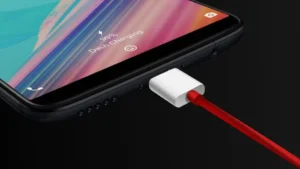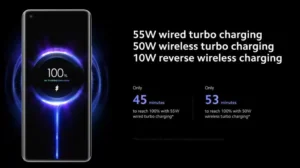The majority of contemporary cell phones are capable of quick charging. Our content will teach you what it is, how to turn it on, and whether or not it shortens the battery’s life. What is fast charging and how to enable it
What determines the charging speed of a smartphone?

One of the numerous elements that affect a smartphone’s charging speed is whether or not it has a fast charging feature. Let’s quickly review the primary causes of a device’s ability to charge more quickly or more slowly.
- Charging technology:
- Fast charging: Modern smartphones support various fast charging technologies such as Quick Charge, Power Delivery and Warp Charge. These technologies allow you to charge your phone much faster than using standard charging.
- Standard charging: Smartphones without fast charging support charge using a standard charger, which means they charge slower than smartphones with fast charging.
- Charger Power: The higher the charger power, the faster it will charge the phone;
- Battery capacity: The larger the phone’s battery capacity, the longer it will take to charge;
- Battery health: Over time, your phone’s battery capacity may decrease, causing longer charging times;
- Temperature: Charging the battery in extreme temperatures (too cold or too hot) may be slower or unsafe;
- Using your phone while charging: If you use your phone while charging, it will charge more slowly;
- Charging cables: There are specialized charging cables that reduce the time it takes to charge your device.
What is fast charging

As the name implies, fast charging facilitates a quicker charge for your smartphone. However, how does it operate? Does it impact the operation of the battery? Let us examine the principal concerns.
A collection of technologies known as smartphone fast charging enables you to charge your phone’s battery considerably more quickly than you could with a standard charger. Many quick charging technologies exist, including:
- Quick Charge (Qualcomm): One of the most common fast charging technologies, used in many Android smartphones;
- Power Delivery (USB-IF): Universal fast charging standard compatible with USB-C devices;
- VOOC (OPPO): Proprietary fast charging technology used in OPPO smartphones;
- Warp Charge (OnePlus): Another proprietary fast charging technology used in OnePlus smartphones.
How does fast charging work?

Fast charging typically functions by supplying the phone with more charging power. Increasing the voltage, current, or both at once will do this. Fast charging raises the voltage (up to 20V) and/or current (up to 5A) in place of the conventional 5V, increasing the charging power (up to 100W).
Multiple stages of charging are used by certain technologies, like Qualcomm’s Quick Charge. The phone charges swiftly in the first stage, but when the battery gets full, the current is reduced to maintain its health.
Please be aware that to achieve quick charging, specific cables, and chargers that work with the phone’s technology are needed. It is crucial to understand these features, particularly if you misplaced the original charger or it was not part of the kit.
Pros and cons of fast charging
pros
- Time Saving: The phone can be charged in 30 minutes or less, which is especially useful when you need to quickly charge your phone before heading out.
- Convenience: You don’t have to spend hours charging your phone to get it to last all day.
Minuses
- Battery wear and tear: Rapid charging can shorten battery life over time.
- Cost: Fast charging chargers and cables can be more expensive than regular ones.
- Not all phones support fast charging: Make sure your phone supports fast charging before purchasing a charger.
How to find out if your phone supports fast charging

The quickest and easiest method is to read the specifications on the manufacturer’s official smartphone website. To find out if your smartphone supports fast charging, there are alternative methods.
- In the documentation;
- On the box;
- In the settings (not in all models).
How to enable fast charging

Most often, fast charging will turn on automatically if you use the correct charger and cable. When you connect the device to the charger, the following message will appear: Quick Charge or “Fast Charging”.
On some smartphones, charging is turned on manually. For example, on Samsung devices. Here’s how to do it.
- Open your phone settings;
- Go to the “Device Maintenance” section;
- Open the “Battery” section;
- Click on the “three dots”;
- Select “Settings”;
- Activate the fast charging feature.
On smartphones with very powerful fast charging, the function may be limited in speed. You can check this as follows.
- Open settings;
- Go to the “Battery” section;
- Open the “Charging Acceleration” tab;
- See if “Boost Charge” is activated. If not, then activate it.
Tips for charging your smartphone

Some tips for charging your smartphone will extend the life of your battery.
- Avoid fully draining and fully charging: Charge your phone when the charge level is 20-30% and unplug it from charging when it is 80-90% charged.
- Use a genuine charger and cable: Chargers and cables from your phone manufacturer are designed and tested to ensure safe and efficient charging.
- Avoid extreme temperatures: Do not charge your phone in temperatures above 35°C or below 0°C. Overheating or undercooling can shorten battery life.
- Use Power Saving Mode: Power Saving Mode can help extend battery life by limiting background activity and power-hungry features.
- Turn off unnecessary features: When not in use, turn off Wi-Fi, Bluetooth, GPS and other features that use a lot of power.
- Update your software: Software updates often include energy efficiency improvements.
Also Read: Top 10 Best Smartphone Processors in 2024
Also Read: How to update an application on Android


